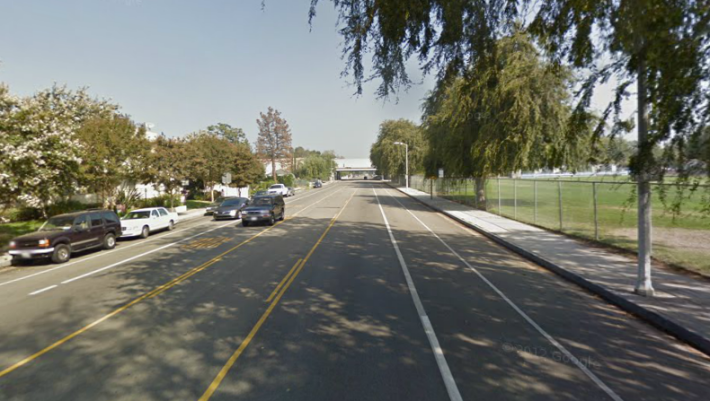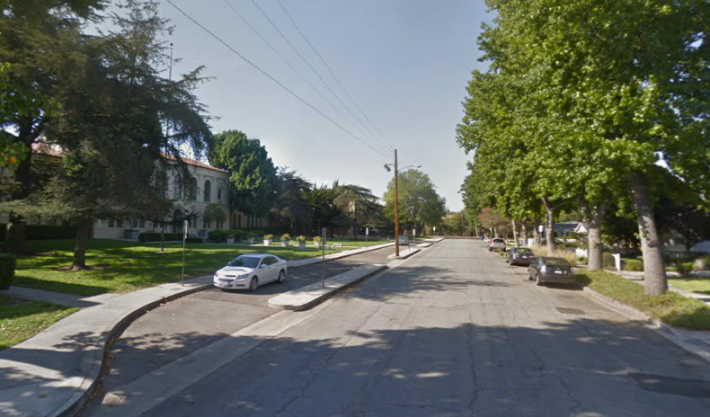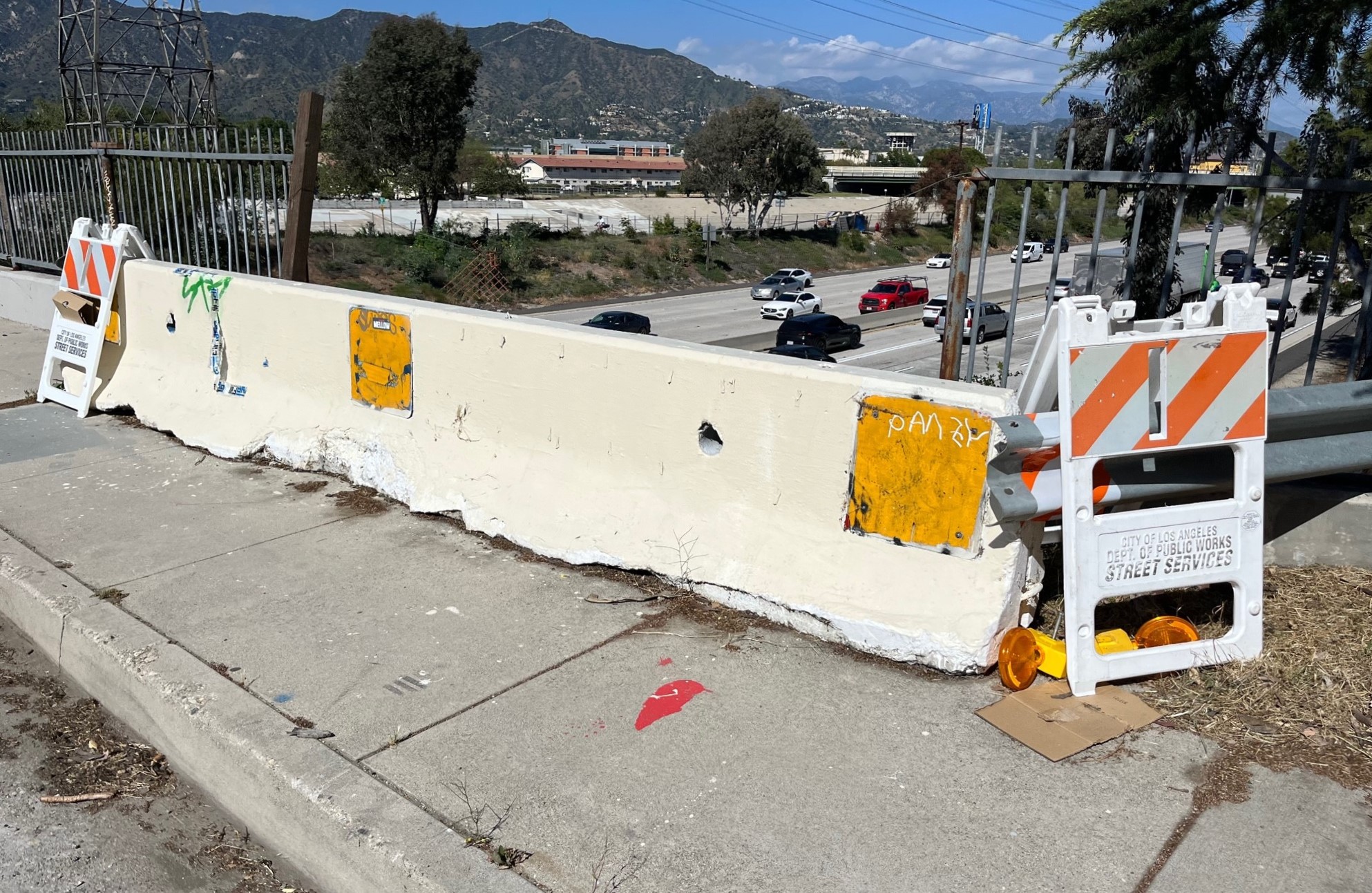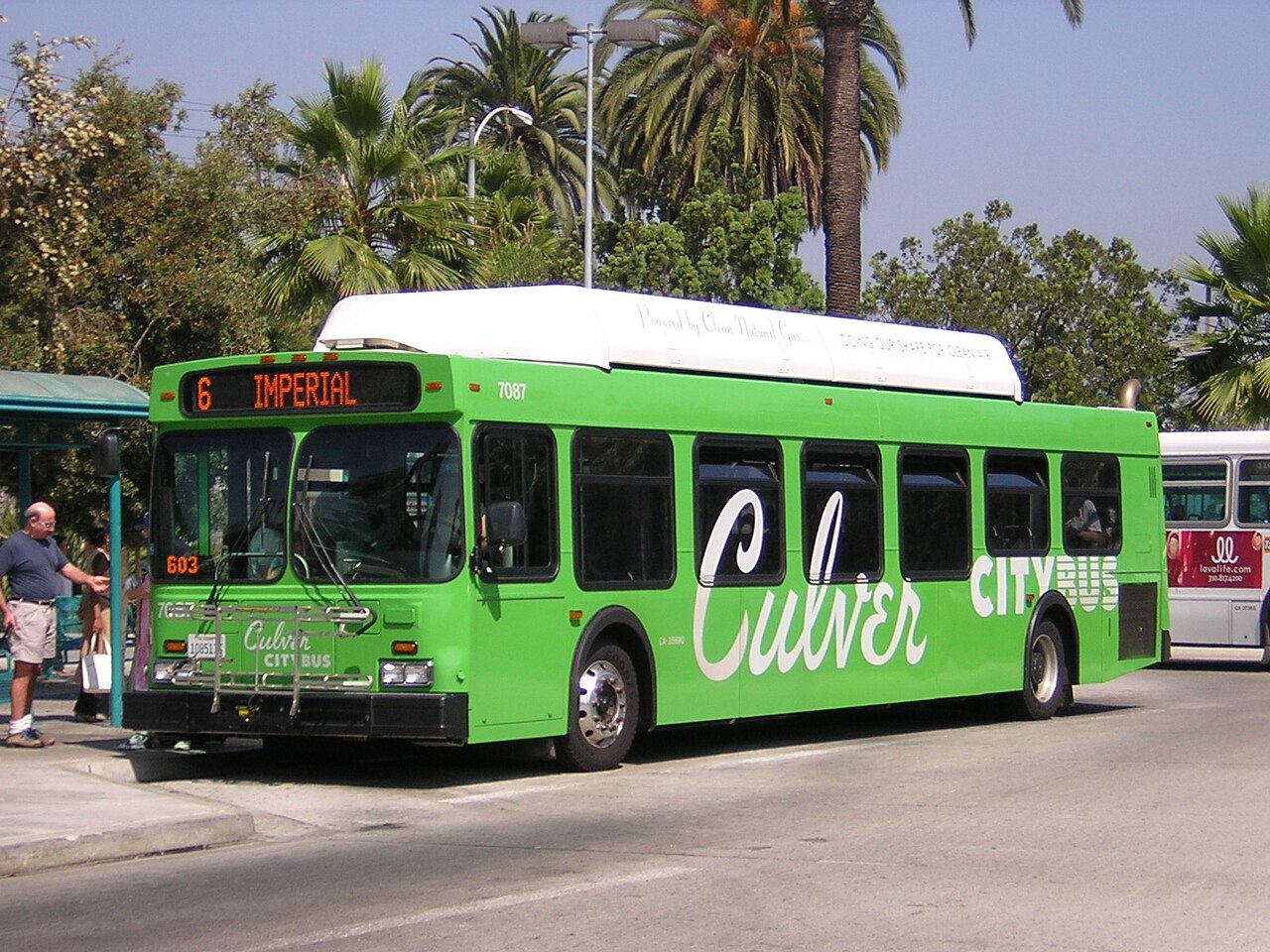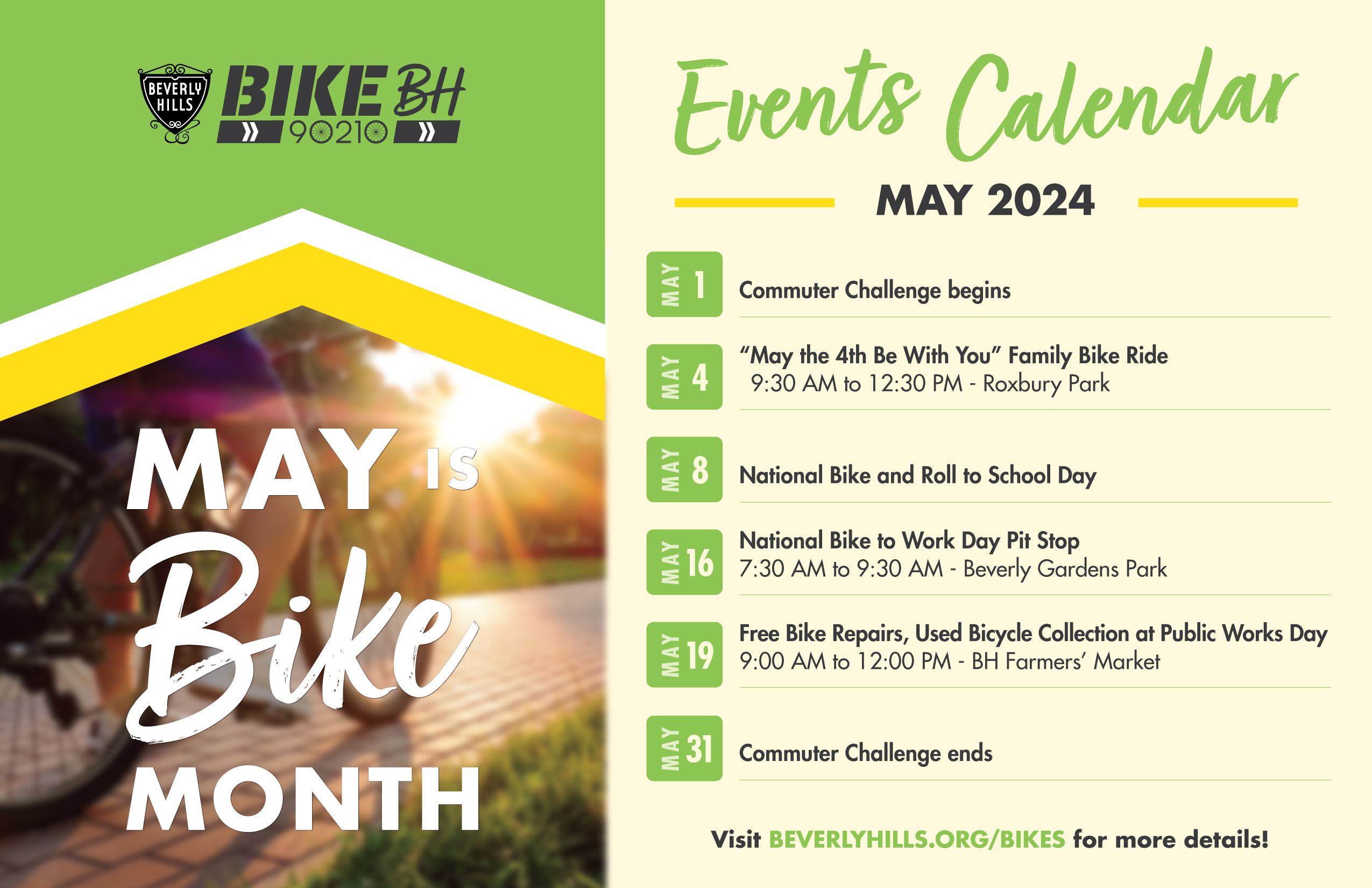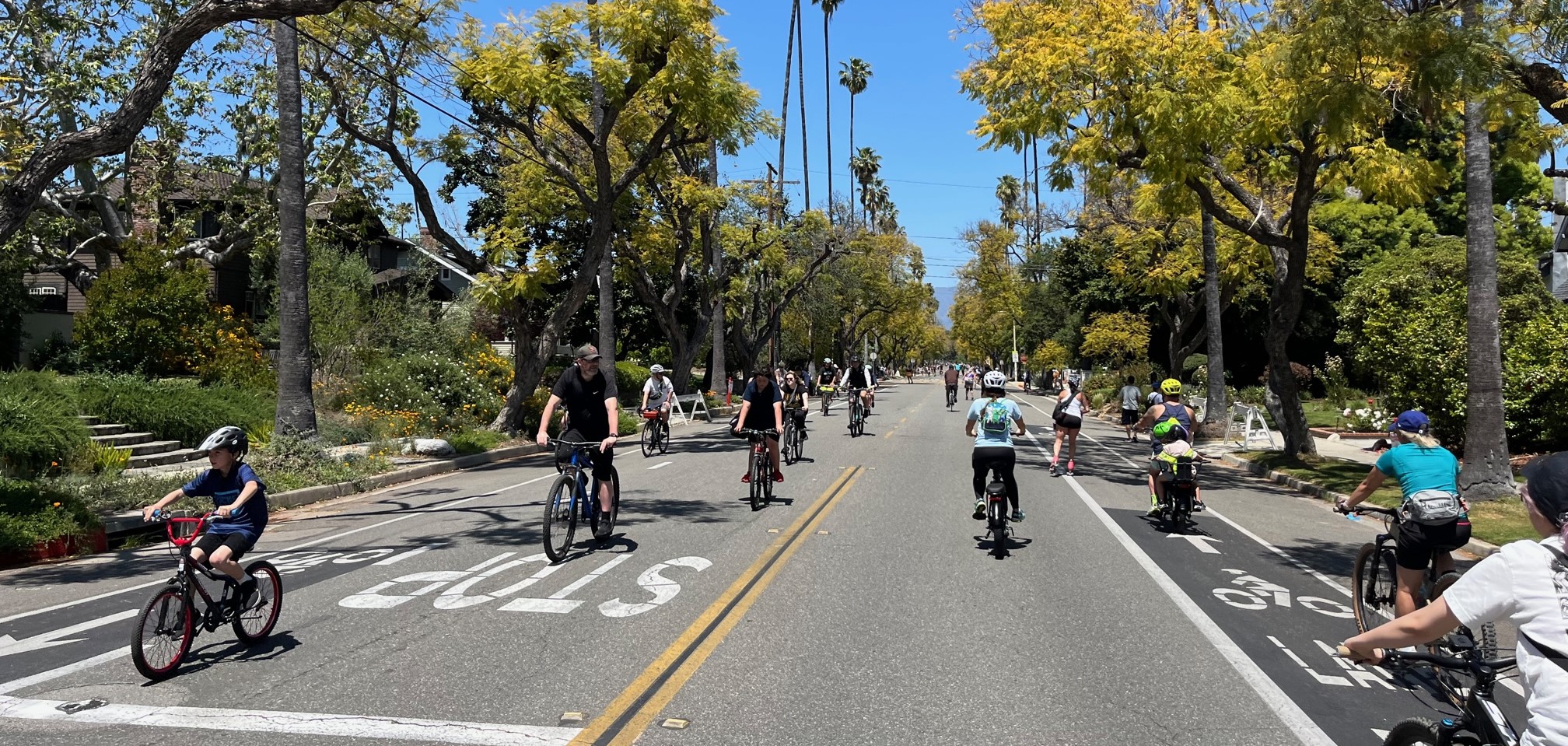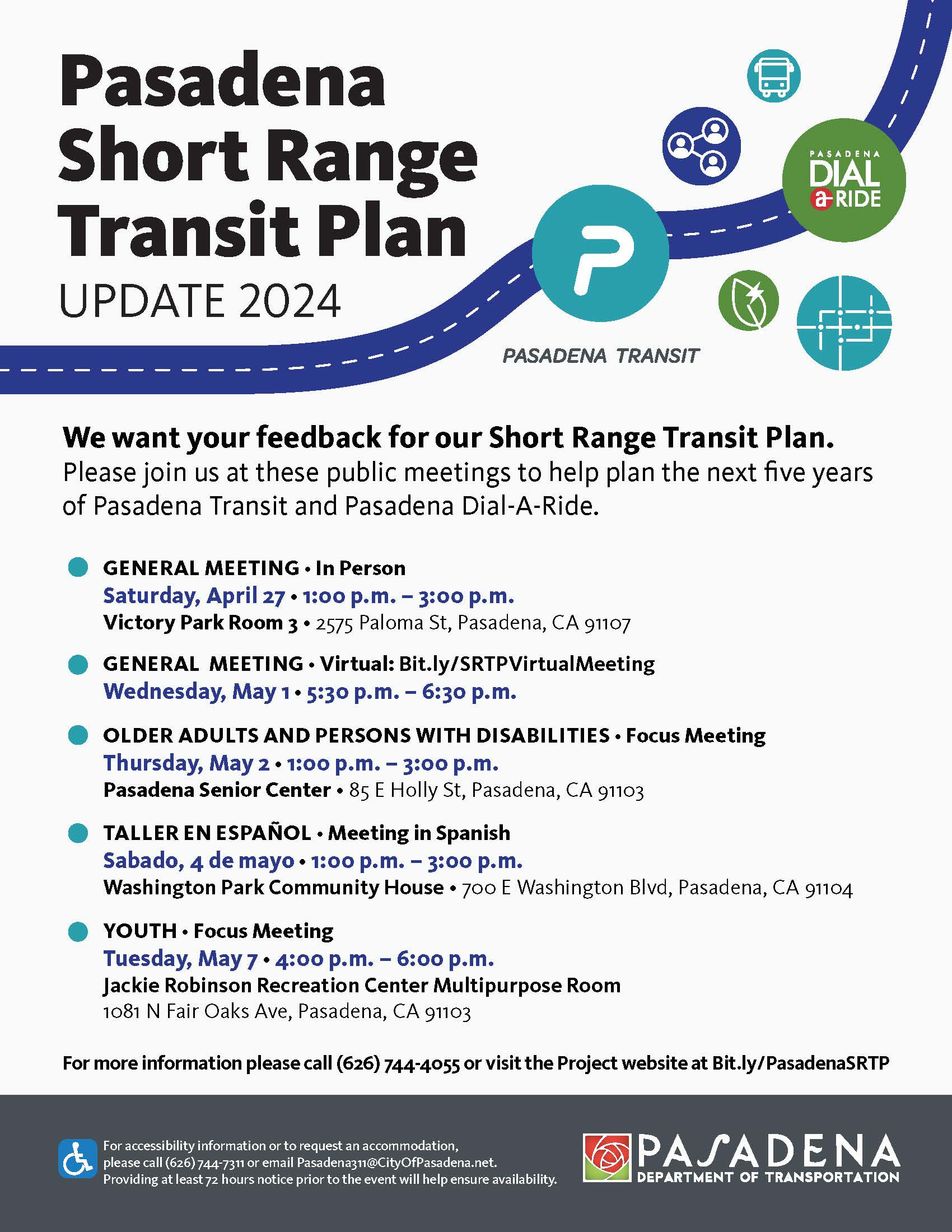Pedestrian Tragedy in the Valley, Again!
9:41 AM PDT on March 16, 2012
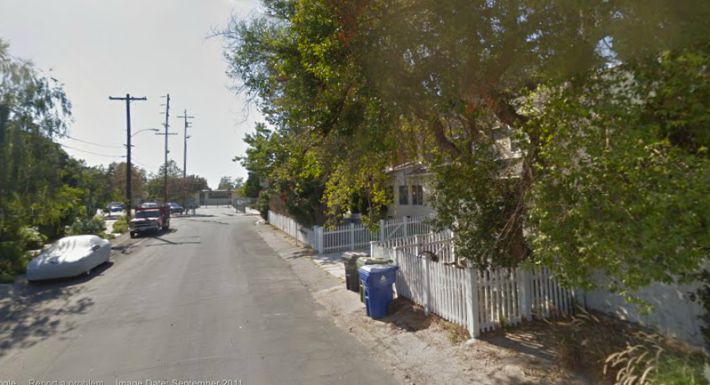
This past Tuesday, early in the afternoon, 11-year-old twin sisters Sydney and Alexis left Walter Reed Middle School and began to walk home, a trip that ended at Colfax Avenue and Moorpark Street when they were hit by a car as they attempted to cross the street.
By all rights, it was a tragic afternoon for everybody.
For the young girls, it was a tragedy that began when they were violently propelled into the air, hit so hard they were knocked out of their shoes. They landed in a bone breaking heap, one unconscious and the other screaming in pain, and were quickly transported to Children's Hospital where one still lies in critical condition.
For the 82-year-old motorist, it was a tragedy that will forever haunt her, regardless of rules of the road or outcome of the LAPD investigation, forever lingering as "that moment" when time stood still. This motorist will be haunted by the image of two young girls flying through the air and lying broken in the street.
For the school children who witnessed the collision, it was a tragedy that required instant intervention from parents and school administrators. Their lives were disrupted, they were confronted with mortality, they were shocked by the fragility of life, and they were confronted by the primacy of motor vehicles.
For the parents of local school children, it was a tragedy that destroyed their hopes and dreams of living in a walkable, livable community. It was confirmation that their children aren't safe on the streets in the immediate vicinity of their local middle school.
For the Firemen who raced to the scene, it was a tragedy that is all too common, picking up bodies from the streets of Los Angeles after a traffic collision. It must eat at their soul and the Daily News picture from the scene of a policeman consoling a fireman is evidence of the toll traffic takes on our First Responders.
For the Police Officers who are left to investigate, it was a tragedy that can't be resolved by determining fault, assigning blame, or releasing a report. Even the LAPD experiences an average of one traffic collision per day, brutal confirmation that the streets of LA are unsafe at any speed.
It was not only a tragedy, it was a moment of revelation, one that saw conflicting paradigms of transportation collide with mythologies of crosswalks and jaywalking in a clear demonstration of our collective need to get in sync with how we expect our neighborhoods to work.
In the immediate aftermath, comments from the LAPD, from the witnesses, and from the community revealed a wide variety of attitudes and opinions of the law, transportation theory, and the rules of the road.
First; when conflicting accounts referred to the girls walking in the crosswalk and walking outside of the crosswalk, both an LAPD Watch Commander and an LAPD Public Information Officer commented by incorrectly defining “Jaywalking” as crossing the street outside the crosswalk.
The only time pedestrians are prohibited from crossing the street outside crosswalks is when they are between two traffic signal controlled intersections, a prohibition that does not apply to any of four streets surrounding Walter Reed Middle School. As for the term “Jaywalking” it is slang and no more appropriate than the term “Jaydriving.” In fact, they are both terms of derision and were used years ago in the power struggle between the modes.
Crossing Between Controlled Intersections 21955. Between adjacent intersections controlled by traffic control signal devices or by police officers, pedestrians shall not cross the roadway at any place except in a crosswalk.
Second; the press release indicates that the young girls crossed the street against the “raised hand” but when a different Watch Commander was asked if it was a solid red or a flashing hand, he replied, “It’s all the same.” Actually, it’s not.
A flashing hand for pedestrians would indicate that the girls were crossing with the flow of traffic and that they could continue to the other side. It would also indicate that the cross traffic didn’t have a green light.
This distinction is important because the LAPD was unable to clear up the simple question, “Was the motorist traveling straight (north on Colfax) through Moorpark, hitting the girls on the far side of the intersection or was it a turning movement, either left or right from Moorpark, north on Colfax.
Third; comments from the community continue to echo the mythology perpetuated by the LADOT which states on its website, “Marked crosswalks give pedestrians a false sense of security.” Traffic Engineers repeat this fallacy as if it is fact. Councilmembers repeat this nonsense to show that they have been listening. Community members reiterate this tragic misunderstanding to show that they are working with the Council office and the LADOT.
The tragic misunderstanding is based on a 1972 study by Bruce Berms who analyzed collision data for streets with crosswalks and for streets with no crosswalks. He concluded his report by posing the question, “Is it possible that marked crosswalks give pedestrians a false sense of security?” Herms then suggested that future research study this and other questions he raised, yet his question has turned into a fact and Herms is more famous for what he didn’t say than for his actual body of work.
While the LADOT continues to engage in the removal of crosswalks because “Motorists disregard marked crosswalks where pedestrian crosswalks are light” the LADOT ignores real opportunities to complement the efficacy of crosswalks with any of a number of traffic calming techniques such as Refuge Islands, Shark’s Teeth, Speed Tables, Raised Crosswalks, Chicanes, Bulbouts, Textured Pavement. These are just a few of the traffic control infrastructure solutions that calm traffic and make streets safer for everybody, from motorists to pedestrians to cyclists to transit passengers.
Safe Routes to School will even pay for these improvements if they support the safety of children as they walk and ride to/from school. Yet the LADOT was unable to even come up with a full roster of applications for this year, passing up Walter Reed Middle School in favor of maintaining the status quo and protecting the jobs of LADOT crossing guards. (Curious, there is no guard at the busiest intersection surrounding Walter Reed!)
Fourth; comments from the public indicate shock that children might walk in the street or cross the street outside a crosswalk. “Sacrebleu! Where are these children from that they don’t have the sense to get out of the street?”
Actually, the children in the immediate neighborhood live on streets that have no sidewalks, they live in neighborhoods that require pedestrians to walk in the street. They compete for their space on the street with trash cans, parked cars, and motorists in a hurry to get to the larger streets so they can get somewhere else very fast. They learn to scurry like rabbits in order to survive and when they get hit, the adults express shock, “Where did they learn that?”
Studio City is full of charming neighborhoods with charming front yards and tight little streets that bear witness to the inability of local motorists to stay on the road. Even corner treatments show the wear and tear that comes from motorists taking corners too fast and too furious.
Fifth; the motor-centric nature of school drop-off zones breeds fast traffic at the expense of pedestrian safety. Walter Reed Middle School has a one-way drop-off/pick-up zone in front of the building. Parents must go 1000’ north on Colfax, 500’ east on Sarah, 1000’ south on Irvine, and 500’ west on Moorpark to complete the commute loop.
In other words, straight streets and a tight schedule work together to create a loop of fast traffic, most of it parents with students. Gone are the days that children can safely walk and ride to school and part of the problem is caused by the parents of children who no longer walk or ride to school. It’s a vicious cycle.
Sixth; in the wake of the tragedy, one would think that the adults in the community, from the LAPD to the LADOT to the School to the parents, would all work together to assess the surrounding streets and to ask “How can we make these streets safer for our children?”
South on Colfax Ave there was a FedEx truck parked in the Bike Lane. Where is Traffic Enforcement?
North on Colfax, across from the school, there was a car double parked in the Bike Lane. Where is Traffic Enforcement?
East on Sarah St, there is a Trailer parked as if the streets surrounding the school are an industrial zone. By default, Sarah is an industrial zone and is a favorite place for truckers to park their 18 Wheelers while they nap or their trailers during layovers. Where is Traffic Enforcement?
Finally; this type of incident is not rare or uncommon, and the typical response is to address the vulnerable user with advice on how to be a better behaved victim.
Our streets are engineered for fast traffic, a simple fact that results in housebound seniors who typically outlive their ability to drive by several years, seven years for men and ten years for women. Everybody suffers when our streets are too fast.
Colfax Avenue is currently certified for radar/laser speed limit enforcement, with a speed limit of 35 miles per hour, from Moorpark Street to Victory Boulevard. This certificate will expire on April 13, 2013.
Moorpark Street is currently certified for radar/laser speed enforcement, with a speed limit of 35 miles per hour, from Moorpark Way to Van Nuys Boulevard. This certificate will expire on May 30, 2013.
In both cases the LAPD, in concert with the LADOT, will either seek an extension of the speed zone survey or they will study the traffic and set the new speed limit at the 85 percentile of unimpeded traffic. In other words, the motorists will vote with their gas pedal on the new speed limit.
California’s Safe Routes to School (SR2S) program is accepting grant applications through March 30, 2012 and none were turned in for Walter Reed Middle School. Perhaps it’s time for the LAPD and the LADOT to spent less time working on speed limit increases and more time pursuing funding applications that would make it safer for kids who walk and ride to school.
Stay in touch
Sign up for our free newsletter
More from Streetsblog Los Angeles
Freeway Drivers Keep Slamming into Bridge Railing in Griffith Park
Drivers keep smashing the Riverside Drive Bridge railing - plus a few other Griffith Park bike/walk updates
This Week In Livable Streets
Bike Month, Hyperion street safety, Eastside rail plans, Pasadena transit, CicloIRVINE, Culver City bus service, and more
Active Streets Mission-to-Mission – Open Thread
Tens of thousands of participants biked, walked, skated and scootered on car-free streets through San Gabriel, South Pasadena and Alhambra

